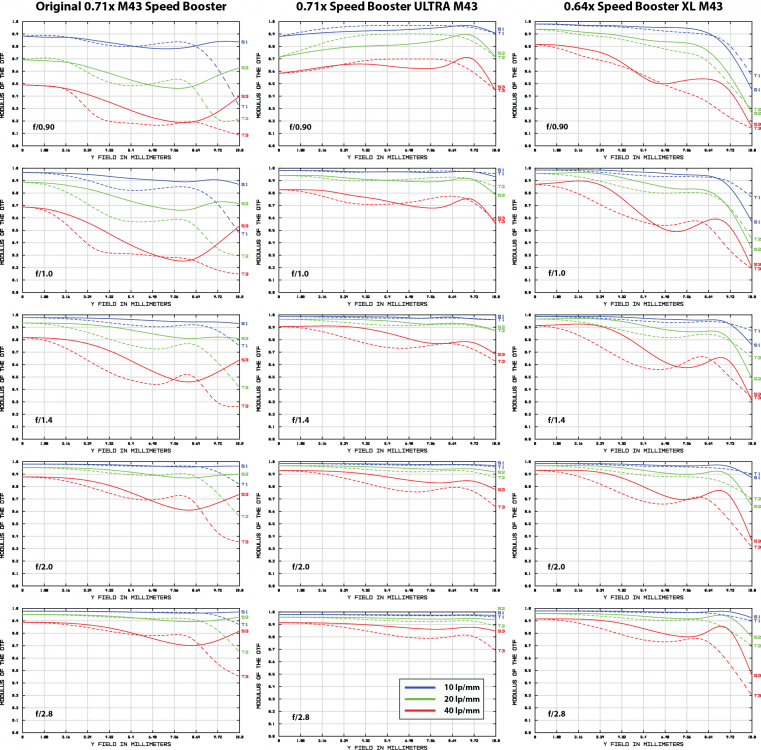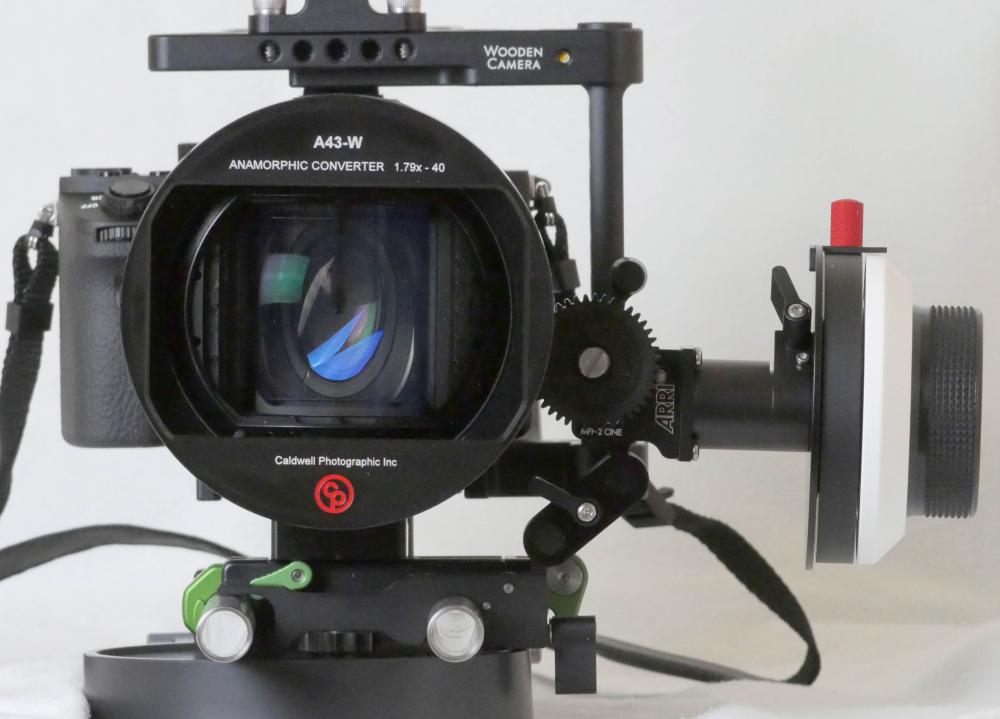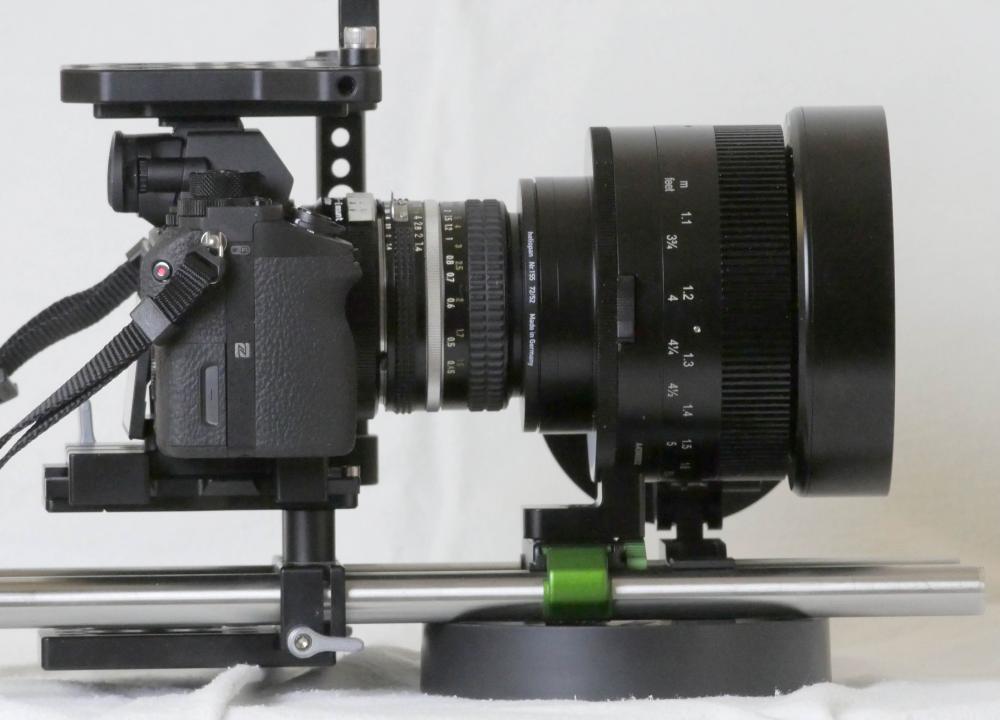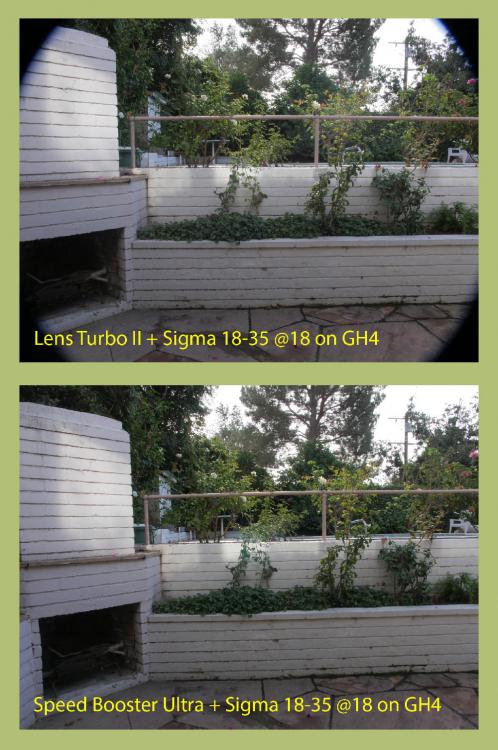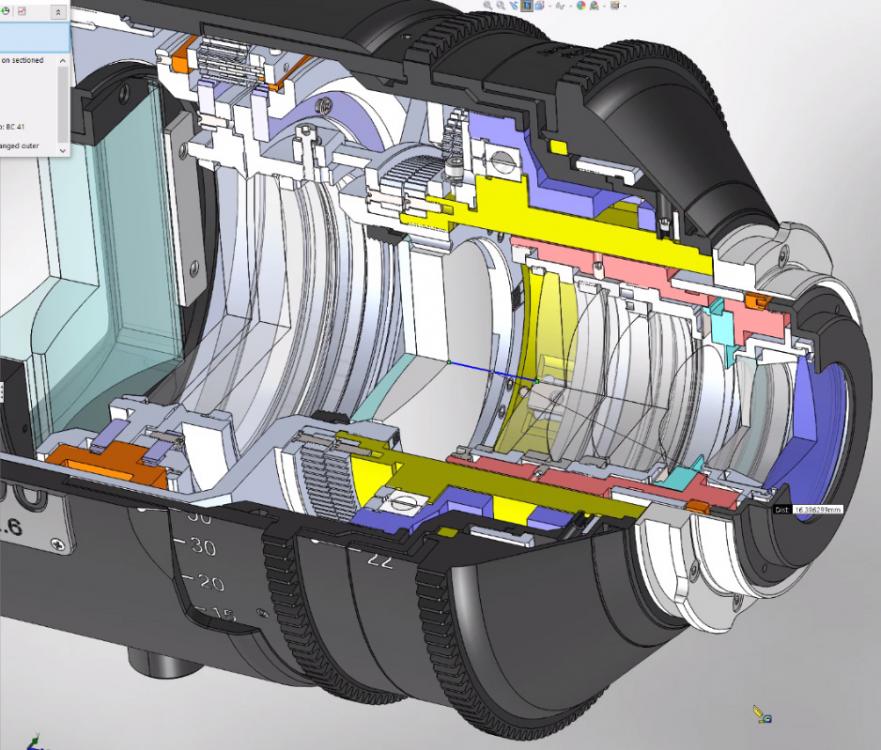
Brian Caldwell
Members-
Posts
153 -
Joined
-
Last visited
Content Type
Profiles
Forums
Articles
Everything posted by Brian Caldwell
-
Difference between original Speed booster and the Ultra 0.71x
Brian Caldwell replied to amsh89es335's topic in Cameras
The Ultra uses a significantly better optical design, with very high MTF and insignificant corner falloff. As a result, the Ultra will sharpen up any lens that is attached to it, including the Zeiss Otus series. Below is a very detailed MTF comparison of the original M43 Speed Booster, the Ultra, and the XL. The XL is also very sharp, but is a little more specialized than the Ultra. -
Large marginal ray obliquity darkens the edges of bokeh circles. Large chief ray obliquity in image space darkens the corners of the image. Two very different but related effects.
-
Oblique rays strike the center of the image as well as the corners. These are aperture dependent and are called marginal rays. The relationship between f-number and the marginal ray angle is given by f/# = sin(theta), where theta is the marginal ray angle. So, at f/1 the marginal ray angle is 30 degrees, and so on. The obliquity of the marginal ray does cause a form of pixel vignetting that perhaps should be called pixel apodization. The effect is that the edges of bokeh blurs - where the marginal ray obliquity is highest - is darkened relative to the center. The good news is that this is the definition of "good bokeh". I think Andrew's two sample images reveal this effect. I would guess that the bottom image was shot with the faster lens.
-
I haven't carefully read every post in this thread, but everyone keeps incorrectly referring to the document in the first post as a "patent", when it is in fact only a published patent application. Patent applications aren't officially issued patents, and normally haven't even been reviewed by an examiner when they are published.
-
I'm assembling and adjusting the first 100mm prime right now. Samples of the 100mm and 32mm should be ready by the time Cine Gear rolls around. Another two (50mm and 150mm) hopefully by the end of the year. The "in-betweens", 40mm, 60mm, and 75mm will likely not appear until next year. I'm not sure about the adapter schedule yet.
-
That's what I'm thinking, although GH5s in anamorphic 4k mode and GH5 in anamorphic 6k mode to be more exact? Thanks Andrew!
-
I've built prototypes of an iscorama-style single-focus adapter, but its really only suitable for shorter focal lengths in the 35mm to 75mm range. Also, its a bit large, and the front element moves during focusing, which may cause some issues with matte boxes. I'm also building a second type better suited for longer focal lengths in the 75 to 200mm range. I'm still debating whether to modify these for internal focusing, which would be good for heavy-duty cine use, but would make the adapters larger, heavier, and more expensive. To be honest, I've put the adapter project on hold until I get a few focal lengths in my anamorphic prime series completed.
-
I'm trying to find out whether the Panasonic GH5s has an anamorphic movie mode that uses the full 17.3 x 13.0mm m43 format (21.6mm diagonal). Does anybody know? The actual format size for anamorphic shooting is critical to me. Thanks!
-
Panasonic GH5S 4K / 240fps low light monster
Brian Caldwell replied to Andrew Reid's topic in Cameras
Forgive me if this question has already been answered. Does the GH5s have a full-frame 4:3 anamorphic mode - i.e., with a full 21.6mm image diagonal? I know that 6k anamorphic is gone, but the maximum anamorphic image size is critical to me. Thanks. -
I'm curious if you are using a cropped mode on the GH5, because a quick test shows you get severe vignetting with the Lens Turbo II on full-sized m43 format when paired with the Sigma 18-35 at shorter focal length settings. This despite the fact that the Lens Turbo II has less reduction (0.726) than the Speed Booster (0.71) Even though the 18-35 has sufficient image circle diameter at 18mm to handle 0.71x focal reduction, the lesser 0.726x factor of the Lens Turbo II does not mean you are "inside safe margin". The issue here is that image circle diameter is only part of the story. Equally important is the exit pupil distance of the lens, and how well the focal reducer handles longer exit pupil distances. This is where the Lens Turbo II completely falls apart, because the 18-35 is nearly telecentric at the wide end, with an exit pupil distance of 150mm. My simple test above shows what happens: the vignetting with the Lens Turbo II is clearly caused by the focal reducer, and not the Sigma 18-35.
-
Agreed about the de-squeeze options. If I were writing the monitor firmware I'd allow a continuous variation between 1.00x and 2.00x (at least to 0.01x resolution), and then show the resulting output rectangle ranging from 4:3 to 2.66:1. "Special" values like 1.33x, 1.5x, 1.79x, and 2x could be made available in a separate dumbed-down menu I suppose. I think the problem is that anamorphic is confusing to many people, and Panasonic has made some lowest common denominator assumptions about their customer base.
-
The problem is that focal reducers naturally want to shrink the optical path, which is why a boosted lens is shorter than the same lens with a plain adapter. To do an anamorphic focal reducer you need to overcome this tendency, which is much easier said than done. Even if you succeeded and were able to produce an anamorphic focal reducer I don't think that people would go nuts over it. The reason is that it would be a rear anamorphic adapter, and therefore would not produce the horizontal flares, oval bokeh, and differential depth of field that are the main reasons why anamorphic is used nowadays. No doubt there would be a flurry of interest in the market, but then people would be spitting mad when they discovered that their newly created rear anamorphic lenses just do not look anamorphic. And then the mob with pitchforks and torches shows up at my house. No thanks!
-
The base design is for Arri Alexa open gate, with a PL mount. I've intentionally made the BFL very long so that all lenses will be compatible with PL-EF adapters ( https://c7adapters.com/en/product/pl_lens_-_ef_mount/35 ). Due to the positive lock feature these adapters are completely rock steady and don't introduce any play that would be noticeable during focus pulls. So you basically have a choice of PL or EF by use of the adapter. With EF you can use COTS Speed Boosters to go down to M43 at very high speed. Alternatively, I may offer "native" M43 mount if the demand warrants it. Similarly I'll be able to produce "FF" and 65/70mm versions using the same base optics plus different rear optical groups. Either way, focus will be one-ring.
-
Hi Andrew: Any input you can give to Panasonic would be terrific - I really appreciate it! I'm really psyched about the GH5, and think it could become a really major anamorphic camera since the format is basically the same size as a 4:3 crop of Super 35. Regarding anamorphic lenses, I'm currently working on primes, and they are mechanical beasts due to the Panavision-style counter-rotating Stokes lenses. So, I'm in the weeds worrying about screws, bearings, and special tools needed to manually pre-load a whole bunch of anti-backlash gears. One thing related to M43 and the GH5 is that they will be compatible with the M43 Ultra Speed Booster via high quality PL-to-EF adapters, which will create T/1.4 speed for all but the longest focal lengths.
-
Just a small correction to Andrew's article: All of the one-stop Speed Boosters sold by Metabones are 0.71x, not 0.74x. Note that a full stop is 1/(SQRT(2)) = 0.71.
-
Its a garbage patent. The fact that it expired several years ago - and hence is now in the public domain - and yet nobody has used the "technology" to produce anything should tell you something. The Kodak patent example is huge, slower than f/5, and basically doesn't work. The clue that something is seriously wrong is that the entrance pupil of the attachment - which must lie at the exit pupil of the attached lens - is tiny and located right next to the first surface of the adapter. This will result in severe vignetting with just about all lenses. I can't imagine that any prototype was ever made. If you restricted yourself to telephoto lenses having an extremely long back focal length you *might* be able to design one that works, although US5499069 is non-enabling and you would have to invent something from scratch. The Kodak patent is completely useless if you want to make a general purpose focal reducer that will work with any SLR lens.
-
Its not a Speed Booster, but the Artemis Prime directors viewfinder from Chemical Wedding does exactly what you want: http://www.chemicalwedding.tv/artemisPrime.php
-
Hasselblad H6D 100C Review. Shoots 4k Video MF
Brian Caldwell replied to webrunner5's topic in Cameras
The Panavision DXL is basically a re-housed Red Weapon 8k, and their new "70mm" lenses in fact cover just a bit larger than FF/Vistavision. A few years ago they were developing a larger format camera with a 48x20.25mm sensor (52mm diagonal) along with a separate set of lenses to go with it, but issues associated with the custom sensor doomed that project. -
My thoughts on the Kipon Medium Format "Speedbooster"
Brian Caldwell replied to Mattias Burling's topic in Cameras
Do the experiment properly and you'll find that the perspective is the same. Surely you must have heard countless times before that perspective depends only on the subject distance. This is a truth that you shouldn't ignore. More precisely, perspective depends on the distance from the subject to the entrance pupil of the lens. For this reason, the entrance pupil is sometimes called the center of perspective. I suppose you could call it the "point of the wedge" in your language. FYI, technically, the entrance pupil is the image of the aperture stop as seen from the front of the lens. So, in your experiment, just put the entrance pupil of both the 24mm and 36mm lenses at 10 feet from the subject, and the perspective will be precisely the same. There are some easy techniques for finding the entrance pupil location with an accuracy of about +/-1mm that stitched panorama shooters use all the time - if you need help just ask. The subject-to-image plane distance is not what matters. Its the subject-to-entrance pupil distance that does. So, this notion that full frame will be "further inside of the wedge than in the APS-C format" is just another way of saying: "oops, I goofed, and didn't keep the subject distance constant". -
My thoughts on the Kipon Medium Format "Speedbooster"
Brian Caldwell replied to Mattias Burling's topic in Cameras
Well, the combination of an 80mm lens and a 0.7x focal reducer does have a focal length of 56mm. After all, focal reducers really do reduce focal length. You could prove this to yourself by measuring the separation of photographed stars or I could prove it to you in my lab using the nodal slide on my optical bench. And if you use that 56mm lens on FF (24x36mm) format, then *it is* a FF 56mm lens. In this case, the use of a focal reducer together with an 80mm lens is a perfectly valid way of designing and creating a true 56mm lens. As I mentioned in my earlier post, the only possible reason it will look different from any other 56mm lens will be due to lens/reducer aberrations and other flaws.

